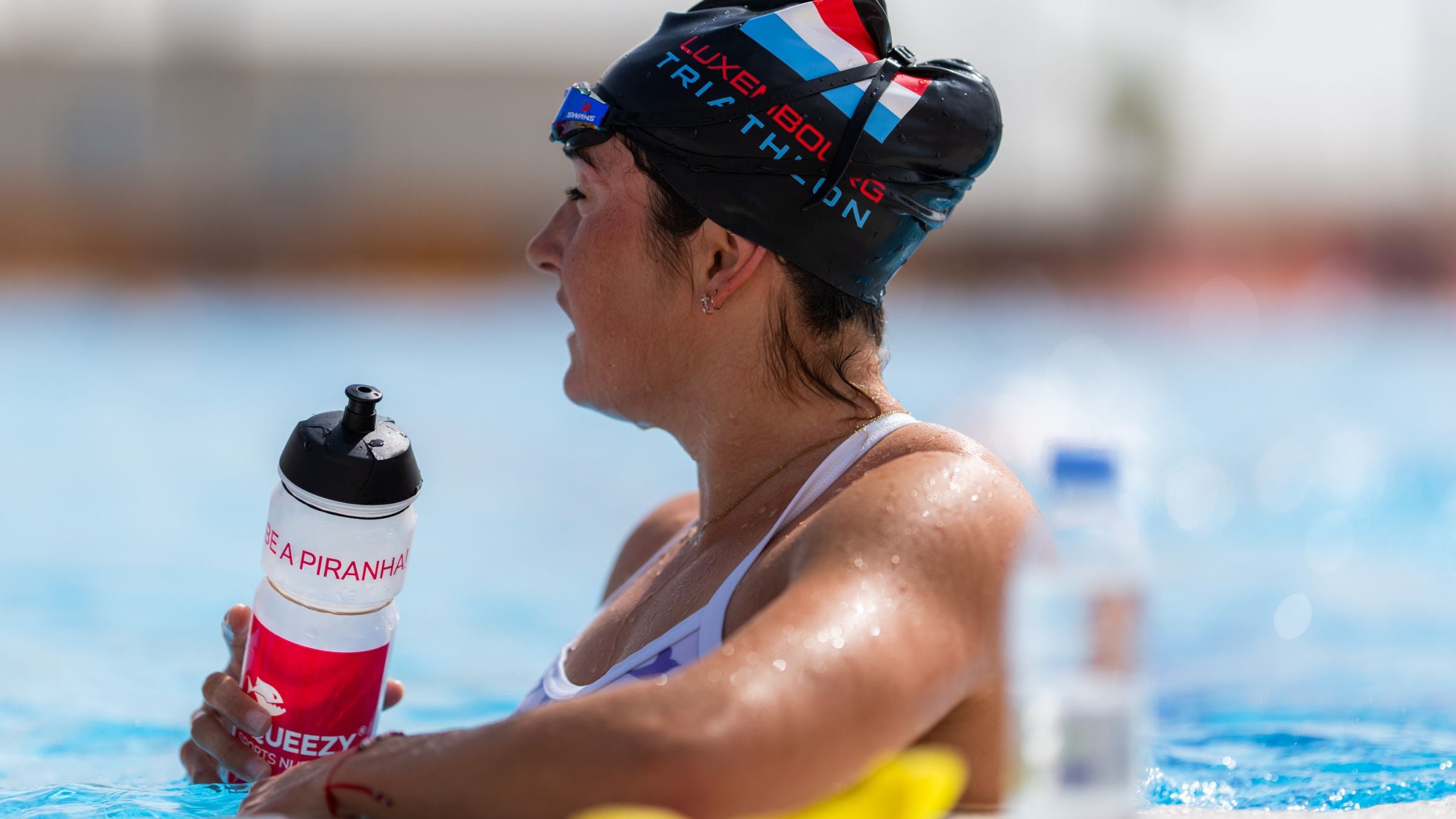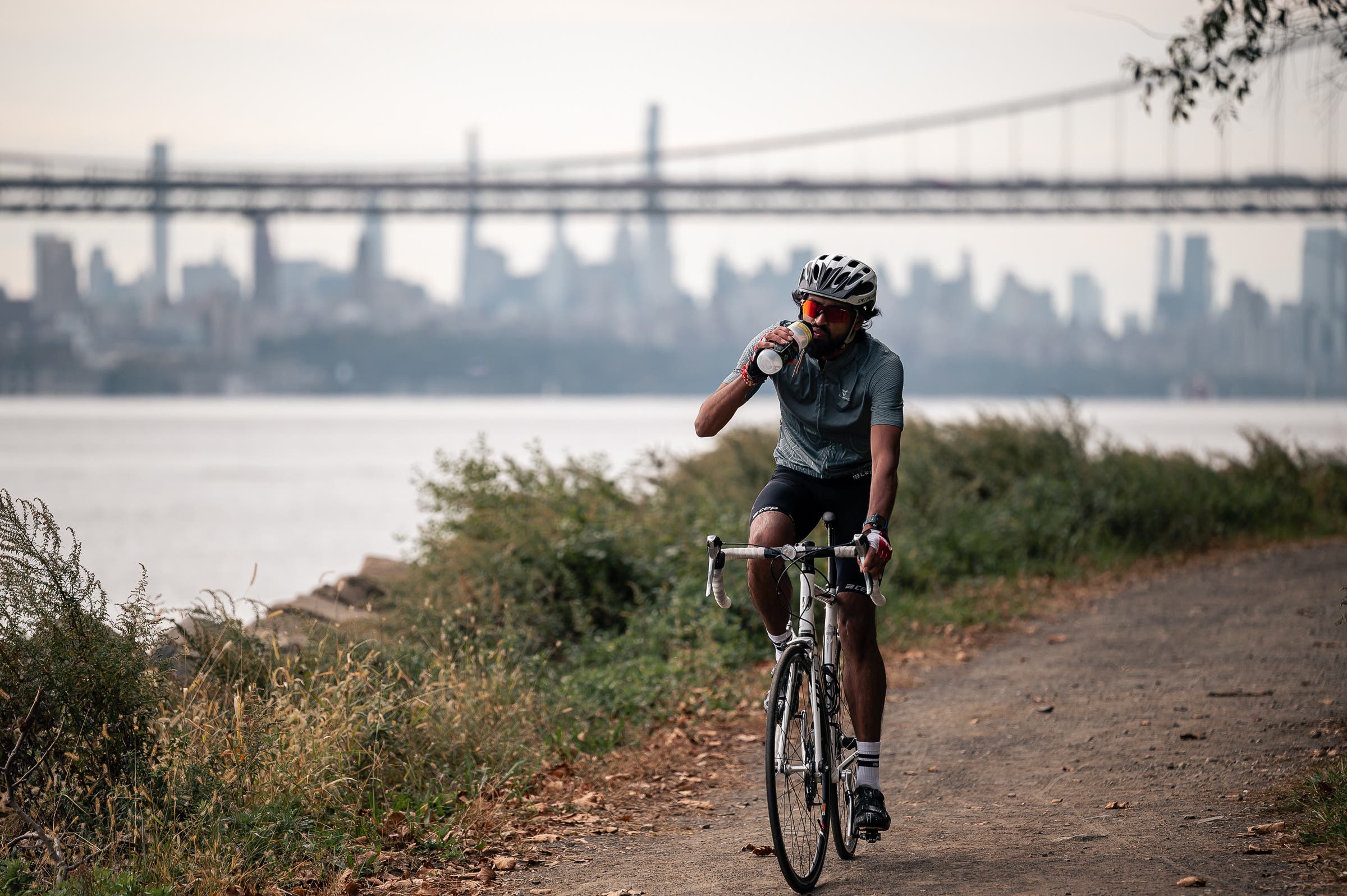I’m a Registered Dietitian. I See You Making These 5 Avoidable Rehydration Mistakes.

Are you making one of these five common dehydration mistakes? (Photo: Super League Triathlon)
It’s no secret that hydration is an essential component of getting the most out of yourself in training and racing. But hydration is more than filling up the body with water and sports drinks while you’re getting sweaty – it’s also about rehydrating after the hard work is complete. This ensures expedited recovery and prevents the continuous, compounding effects of dehydration. Simply put: If you’re not rehydrating, you’re not recovering; if you’re not recovering, you’re not training (well).
Why rehydrating after a workout matters
Prolonged exercise nearly always ends up in some level of uncorrected dehydration, and people rarely drink enough to replace 100% of their sweat loss. Post-exercise rehydration is extremely important, because this the post-workout period is when the body is primed to rebalance fluid and electrolyte levels. The full extent of your sweat losses (both fluid and sodium) need to be replaced at some point if your recovery is to be considered complete. If not, you’ll likely run into problems when you try to dig deep again.
But while rehydration is crucial, athletes are often guilty of overlooking the importance of this, and often face limited periods to hydrate between sessions of physical exertion. But though life is full of daily challenges, staying hydrated shouldn’t be one of them. While some of these common mistakes may seem intuitive, most of the list below may surprise you. Avoid these hydration “don’ts,” and you’ll be well on your way to replenishing your hydration stores the right way.
The most common rehydration mistakes athletes make
1. Forgetting to eat your water
We often forget that rehydration efforts involve more than water. The foods you choose to consume – namely water-saturated fruits and vegetables – can support your rehydration efforts. Crunchy and peppery radishes are about 95% water by weight, while peaches are nearly 90% water. Made up of 92% water by weight, slices of watermelon are a refreshing way to take in more liquid post-sweat session. Cantaloupes, cucumber, celery, apricots, sweet peppers, zucchini, and blueberries are also items with high water content.
Bonus: These water-rich foods also contain nutrients and antioxidants to support your body as it tries to recover from a big workout. So aim to include these foods into your post-training routine to make it easier to get the fluids you need.
2. Swearing off non-alcoholic beer
For many athletes, it makes sense to cap off a big race or hard workout with a beer. Some events even promote popping the top on local craft beers as part of the overall experience. Though tasty, athletes should know that a post-exercise beer is working against you when it comes to rehydration efforts. Alcohol (ethanol) has a well-recognized diuretic effect. This is largely thought to be due to a direct effect of alcohol on the release of arginine vasopressin (AVP) from the posterior pituitary, although there may also be some direct effects of alcohol on renal absorption. Ingestion of alcohol-containing drinks after exercise should be avoided or greatly limited if rehydration is the primary goal, especially if you are not already drinking a sufficient amount of fluid.
But this is not true for low or alcohol-free beer. Research shows urine output is greater when people attempt to rehydrate after exercise with 4% beer compared with low-alcohol beer or water. Urine output over a recovery period tends to be increased as the alcohol content of the drink rises. The new wave of alcohol-free beer on the market, like Athletic Brewing, can be considered a viable rehydration beverage, and one that makes it safer to drive home after. Even better if you add a bit of sodium to the no-buzz brew, as this can reduce urine volume further after a period of exercise-induced dehydration, meaning improved fluid retention and rehydration. Cheers to that.
3. Taking too many small sips
When rehydration is of paramount importance, it can be a good idea to chug your fluids instead of sipping them since volume matters. A research review on gastric emptying published in Nutrition Reviews determined that when we consume more fluid at a single point in time, it moves through our stomach faster. A larger amount of liquid empties from the stomach after ingestion of 600 mL of fluid, compared with 400 mL, which was greater compared with 200 mL. The increased pressure in the stomach, from more liquid sloshing around, encourages greater digestion rates.
If your gut can manage it, it’s smarter to take a few bigger gulps than tiny sips over a longer period when rehydrating. But there is a limit to this principle: The aforementioned study found there was no difference in the volume emptied from the stomach when 600 mL was ingested compared with 800 mL, and there was a tendency for less volume to be bumped out of the stomach after ingestion of 1000 mL. The study author surmises that this suggests there may be an upper limit of gastric volume above which emptying rates may plateau or even become more labored.
4. Not drinking enough after a workout
This one is obvious, but often athletes zero in on their fluid needs during a workout, only to take a lackluster approach to what they’re drinking after. This usually results in drinking an inadequate amount to truly hydrate.
You probably need too drink more than you think. To adequately restore hydration levels after an exercise session where some degree of dehydration has occurred, there is a fair amount of scientific consensus on how much to drink after a workout: aim to take in 125 to 150% of the volume of fluid lost during exercise, which will help offset urine losses during the recovery period (after all, when you drink more, you pee more).
To get the most accurate measurement of your post-workout fluid volume needs, it’s important to know how much fluid you shed during a workout. A good way to how much you need to drink after a training session is with a simple sweat test.
How to calculate fluid needs after a workout
- Weigh yourself before and after your workout.
- The difference in weight is (for the most part) the amount of water you lost. Multiply that number by 16 to get fluid lost in ounces.
- Multiply fluid lost in ounces by 1.25 and 1.5 to get your range in ounces. For instance, if you lost 32 ounces (or two pounds) during your workout, you should aim to take in 40 to 48 ounces of fluid afterward.
If you’d rather use technology to stay on top of your numbers, products like Nix Biosensor can help athletes get a better idea of fluid and electrolyte losses during exercise and make recommendations for how much to drink after your workout.

5. Failing to tag-team carbs and sodium
It may now be your habit to take in a sports drink during a hard-pushing workout, but a beverage with both carbs and sodium should also be part of your post-workout recovery efforts. Rehydration is a function of gastric emptying, intestinal fluid absorption, and – not to be overlooked – retention of fluid to restore body fluid. A formulated sports drink can make these better work in your favor.
In a randomized, double-blind study published in the journal Nutrients, male athletes took on 90 minutes of interval training that resulted in exercise-induced dehydration of 2.6% body weight. It was discovered that rehydration was better achieved when participants consumed 100% of their fluid needs from the drinks containing both carbs and sodium, compared to just water.
Sodium helps maintain blood osmolality, which suppresses renal exertion of fluid and thus promotes fluid retention in the body. In other words, a bit of salt in your water means you pee out less of it. Carbohydrate content might also promote fluid retention during rehydration efforts by prolonging gastric emptying and intestinal absorption.
Not to be overlooked is that the simple carbs in a sports drink can also help you more quickly replenish spent glycogen stores, while the sodium aids in replacing some of what you lost in sweat.